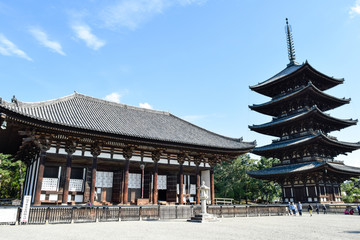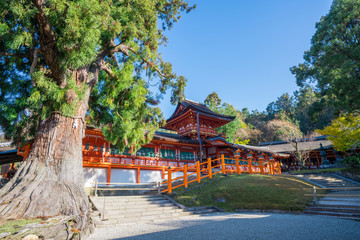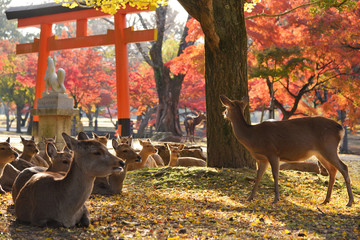Nara
Todaiji Temple
Todaiji Temple is a historic Buddhist temple built in the 8th century during the Nara Period in what is now Nara City.


- The Great Buddha: At the center of Todaiji Temple is the largest bronze statue of the Great Buddha in Japan. Widely known as the “Great Buddha of Nara,” it stands approximately 15 meters tall. The Daibutsuden (Great Buddha Hall) is located on the grounds of Todaiji Temple and welcomes visitors with an overwhelming presence.
- Nigatsudo: Nigatsudo, so named because the practice is held every February, is a part of Todaiji Temple. From Nigatsudo, visitors can enjoy a panoramic view of the city of Nara.
- World Heritage: The temple was registered as a UNESCO World Heritage Site in 1998. It is a symbol of the Buddhist culture of the Nara period.
- Seasonal Scenery: The Todaiji Temple grounds are known for their beautiful seasonal scenery. Cherry blossoms are in full bloom during the cherry blossom season, and the autumn leaves are in full bloom in the fall.
Nara Park
There are places where wild deer can roam freely and interact with visitors.


- Free-Roaming Deer: Nara Park is home to more than 1,200 deer, which roam freely throughout the park. These deer are considered a national natural treasure based on a tradition that dates back to the Nara period (710-794).
- Deer Culture in Nara: Deer in Nara are affectionately known as “Nara deer” and are loved by tourists and locals alike. Deer live around tourist attractions, and a special experience awaits visitors.
- Deer crackers: In the park, you can purchase deer crackers (a snack for deer) to give to the deer. Deer will come up to you for the crackers. You can take pictures with the deer and feed them deer crackers.
Kasuga Grand Shrine
Kasuga Taisha is a shrine in Nara, Japan, famous for its multiple torii gates and stone lanterns.

- The main shrine pavilion of Kasuga Taisha was built in the early Heian period (794-1192) and has been rebuilt several times since then. The shrine pavilions are designated as Important Cultural Properties and have high historical value. In addition, Kasuga-taisha is known as a shrine with a long history because it is an ancient shrine founded in the Nara period (710-794).
- Mystical Atmosphere: Kasuga Taisha Shrine has a quiet and mystical atmosphere, with scenery that changes with the seasons. In spring, the cherry blossoms are in full bloom, and in fall, the beautiful autumn leaves are in full bloom, attracting people’s attention. The natural environment around the shrine is especially rich and relaxing for worshippers.


